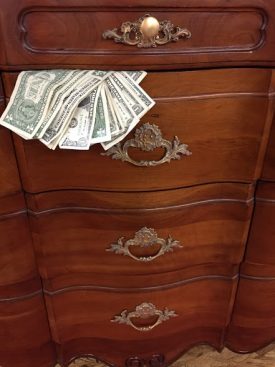
Selling Furniture, Flip for Cash
You just inherited some antiques from a family member that aren’t exactly your taste.
Maybe you purchased something years ago and it just doesn’t fit with your style or décor anymore.
Or, maybe it is simply time to downsize your wall-to-wall collection of used furniture.
There are many reasons you might decide selling your furniture is right for you. Flipping furniture and antiques is a large business. Indeed, the resale business (of clothes, furniture, and other commodities) generated roughly 17 billion dollars in the US in 2016 according to some researchers (Dun & Bradstreet Research). Surprisingly, a greater percentage of Americans now shop at resale shops compared to outlet stores (15% compared to 11%), and the industry shows no signs of slowing down. Find antique furniture near you.
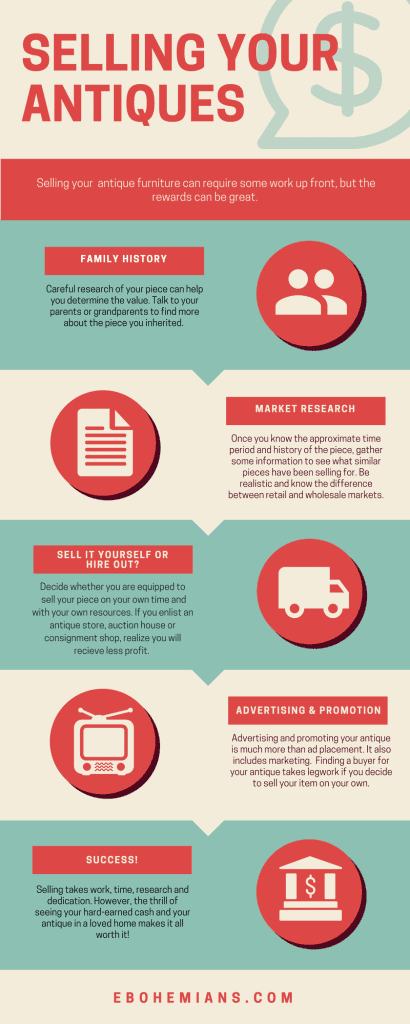
Yet, despite these encouraging numbers, selling antique and flipping vintage furniture requires some work and know-how. Fortunately, we have experience with virtually every approach to selling used furniture.
This Article will Walk you through the 12 Insider Tips of Selling Furniture that antique dealers and furniture consignment shops don’t want you to know! This guide will give you a handle on exactly how, where and to who you can sell your used goods. You may ask yourself, should I sell at an antique mall? Maybe you had your eye on a consignment shop. Or maybe you were ready to give Craigslist a whirl! Like many, you might just be overwhelmed by eBay!
(Please feel free to use and link to our infographic on the right.)
Bookmark this page because you don’t want to miss all of the vital instructions and insights. This Free Guide is updated often and pulls knowledge from the top antique dealers, the best auction houses, and the busiest furniture consignment shops!
- How to Value your Antique Furniture
- The Truth About Furniture Appraisals
- How to Price your Antiques
- Tips for Selling on Craigslist
- The Best Ideas for Selling Furniture at a Yard Sale
- How to Sell Furniture at a Flea Market
- What They Don’t Tell you about Selling at an Antique Mall
- A Guide to Selling Furniture on Ebay
- Top Tips for Selling at Auction
- What You need to Know When Selling at a Consignment Shop
- Secrets of Selling to an Antique Dealer or Antique shops near me
- Why not just Donate Furniture to Charity?
The Value of Antique Furniture
Obviously, the question of antique furniture value should start your process. Afterall, at some point of this process a dollar value will be assigned to your piece of furniture. What makes a piece of furniture antique in the first place? How do you establish the value of an antique piece of furniture?
What makes a piece of furniture antique?
In the furniture world, the word antique designates a piece that is at least 100 years old. Anything between 15 and 100 years old is generally considered “vintage furniture.”
What makes a piece of furniture valuable?
Generally, besides the age, there are four general criteria we have found that help us determine the value of antique furniture or your used furniture.
- Beauty
- Condition.
- Provenance
- Utility and Function.
The first criteria (beauty) and fourth (utility and function) come into play in the buyer’s mind. Thus, largely they are subjective. Indeed, the buyers have to see the beauty and need for your piece for there to be a transaction. So, understand that trends and fashion can influence the value of your antique furniture. 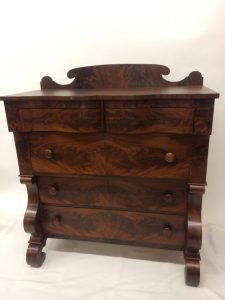
For instance, in most cities, Mid Century Modern Furniture is very popular! Some young buyers don’t care too much about the name brands. But it has got to have the look! However, in the country, you may find that Victorian Furniture or Traditional furniture has more of a calling. Older buyers tend to stick to top vintage brands, and they want high quality, solid wood furniture.
The other two factors, condition and provenance, are less mutable and less subjective. Condition will affect the price greatly, we have found. Major Condition issues that will greatly diminish the value include:
- Broken legs or missing feet
- Deep Scratches and Gouges
- Water or Heat Blemishes
- Mothball Odors (or other smells)
- Warping doors or table tops
- Dirty or Cloudy Finish
- Missing or Mismatched Drawer Pulls
- Sticky Drawers
- Sagging Drawers
- Missing, Chipped or Cracked Glass
- Missing Trim or Inlay
- Cabinet Doors that don’t sit evenly
- Wobbly Furniture
- Missing Keys or Broken Locks
- Bubbling Veneer or Veneer Damage
The Provenance, on the other hand, can take a price tag and literally add a zero or two. Provenance loosely means where the piece came from or who formerly owned it. For instance, a chest of drawers or desk that was owned by a noteworthy historical figure will have greater value, but only if you have proof or some kind of documentation.
If you think you might have something of great value (say, over $2000 in value), it probably would be worth it to get an official appraisal. back to list
The Truth about Furniture Appraisals
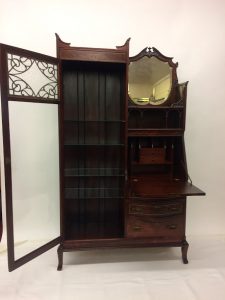 Furniture appraisals are the subject of countless books, television shows, and blogs but many people simply do not understand the basics of appraisals.
Furniture appraisals are the subject of countless books, television shows, and blogs but many people simply do not understand the basics of appraisals.
Firstly, a furniture appraisal is an opinion. Just like a doctor’s diagnosis, appraisals can range and be wildly different. Also, there are different types of appraisals you might seek.
An auction appraisal will roughly give you a range of what you can expect from a well-attended auction in your region. Consider this number a “quick sale” price.
Meanwhile, an insurance appraisal can be significantly higher. This often takes into account the replacement value of an antique. Indeed, finding a certain piece of furniture can be costly and time intensive. Thus, an insurance appraisal often takes this expense into account.
Where to get your antique furniture appraisal?
Most auctioneers will give appraisals for a fee. Expect to pay anywhere between $50 and $200 for an auctioneers appraisal. However, their knowledge can be worth something to you. Indeed, they see thousands of items sell every week and can certainly give a good estimate based on recent and local records.
One thing to note, unlike houses or real estate, there really is no license perse for appraising antiques. However, many people who do antique appraisals belong to associations. Choose your appraiser carefully and make sure to check on their credentials. back to list
How to Price Your Antiques
You can also use your own time and research to appraise antique furniture value.
There are many many resources you can use to appraise your antique furniture. Firstly, price guides in books can be an excellent guide. However, be careful to find the most recently published version of the book. Especially since 2008, values of antiques and antique furniture, like many things, might have changed.
Online Price Guides
Online price guides are an excellent resource for finding true and up-to-date data regarding prices.
One of the best ones to consider is Terapeak. Terapeak is an online tool that pulls in eBay data. This massively useful tool shows you the average prices that a particular type of product received (sold for, not asking price) and shows you what sells quickly and consistently. You can even look at things that sell in your area, as regions can obviously make a difference in price points.
Obviously, working with one of the largest online marketplaces for antique and vintage furniture (eBay), Terapeak can give you a great handle on how to price your item competitively for quick results.
Kovels is another great online tool for determining the value of an antique. Kovels has a great reputation in the antique world. Indeed, their site is like a huge and extensive encyclopedia about everything from Avon bottles to Victorian furniture. Their writers do a fabulous job of writing about antiques in a non-pretentious way.
They also catalog pictures of markings on china and furniture which can help you find specific information about the maker of your piece. 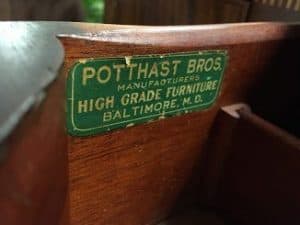
A less extensive online resource but still helpful (and free!) would be our own Antique Prices Guide. Bohemians keep all of our own data, descriptions and prices live on our site. This can be a helpful resource for our local clients who might be looking to sell something in the future. While, our updated website has been live only since 2017, it still has a good amount of reliable data to help you with a basic search. back to list
Sell it Yourself or Hire Out?
Once you have an idea of what your antique or vintage furniture might be worth, now it’s time to make a crucial decision.
Do you make the commitment to sell it yourself? Or do you decide to partner with a business?
Selling your Furniture Yourself
Selling your furniture yourself can help you achieve a great outcome. Obviously, you will receive the full profits of your sale. However, you take on all of the costs and efforts to do so. There are many different venues in which to sell, and they each have their own costs and downfalls.
Tips for Selling on Craigslist
Craigslist has both a great and a horrible reputation.
For those who do not know, Craigslist is a huge Classified Online Platform that allows users to post items for sale, job listings, housing opportunities and even odd jobs. Of course, the platform has reached world wide saturation. So you can search your zip code or city to find results near you.
Many people think of this as a “free” way to advertise, but in fact, Craigslist does charge its users to post things for sale. At the time of this article, the charge amounts to $3 a post under the Antique and Furniture sections.
If you have just one or two items to sell, Craigslist gives you a great opportunity to sell your furniture. Your listing, if done correctly, attracts buyers to give you a call or meet with you.
Stand out locally in the Furniture or Antiques section of Craigslist by starting with an excellent first “featured” photo. Take a picture of your item head on, in good light, so that people can tell what the item is immediately. Now is not the time to get artsy with your photography. 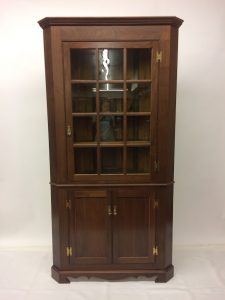 Since many people scroll through the photo section as a way to browse, a good clear photo will probably do the best for you.
Since many people scroll through the photo section as a way to browse, a good clear photo will probably do the best for you.
Craigslist allows up to 24 photos on each post, so use this opportunity to your advantage. Take photos of the side, top and and other important shots of your piece of furniture. Photos of dovetailed drawers or tags of the name brand can provide excellent visual cues to your potential buyers. 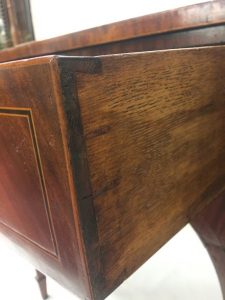
Do not neglect the “Condition” section, and be honest! Hopefully your antique furniture price will reflect the condition.
Likewise a short and sweet title can help you stand out. Be descriptive enough that your buyer can find you if they were to search on Craigslist. For instance, phrases like “China Cabinet” and “Display Cabinet” can be used together to maximize your search listings on Craigslist. Synonyms and Good spelling can help.
In the body of the listing, be clear, concise and logical. Clearly, you will want to mention the brand, size and condition of your item.
I would suggest adding your telephone number. Certainly, not everyone enjoys phone calls, but many potential buyers want to make sure your listing has legitimacy and a human voice can go a long way.
If you don’t want your phone number listed, make sure you check your email often.
Some caveats about Craigslist:
For safety’s sake, it’s always a good idea to keep the item in a garage or storage unit separate from your domicile.
Of course, bring a friend when you meet with a stranger, and be prepared to sort through “spam” emails.
Never respond to a person outside of the craigslist platform. If a person sounds excited to contact you through a different email address, wants to send you a money order or check without seeing the item, or requests to send you anything else unsolicited, do not respond!
Finally, realize you may have to post your item more than once. While Craigslist listings stay active for 45 days, your listing may get buried by other listings quite quickly. back to list
The Best Ideas for Selling Furniture at a Yard Sale
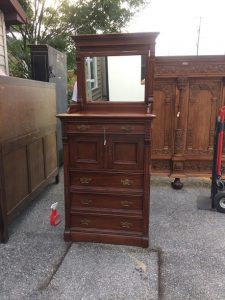 Yard sales can be fun and virtually free way for you to sell some furniture.
Yard sales can be fun and virtually free way for you to sell some furniture.
After all, if you already own your yard or garage, most likely your town allows you to do so for free.
That said, check on your local ordinances about yard sales and parking.
Every county is different and you may need to have a permit to sell from your property.
Tips on Selling Furniture at a Yard Sale
Of course, there are some surefire ways to succeed at a yard sale. Firstly, plan your yard sale at least a week in advance and check the weather report. Sunshine brings happy buyers so make sure you maximize your chances for great weather. 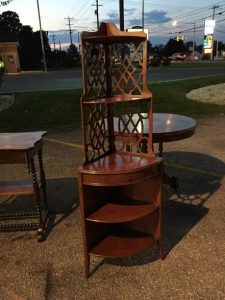
Secondly, take your cue from retail stores and organize your things. “Fruit to the front” means place your best items in the most visible spot. Large colorful price tags and signage can draw a crowd. Certainly, try to organize any small merchandise on tables.
And while it sounds simple, clean your furniture! You want to present your goods in the best light, so some polish and Windex go a long way in getting a good price for your antique furniture.
Finally, advertise your yard sale with social media and free/cheap venues like Craigslist. If you are in a rural or out of the way road you will have to attract your buyers with the best photos possible.
Of course, a yard sale is a yard sale. In other words, people expect bargains. Unless you live in Beverly Hills, not many people carry around thousands of dollars and expect to pay top dollar at your garage.
Also, be ready to bargain. Negotiation usually figures into running a yard sale. Stay friendly and positive. Set reasonable expectations and you will not be disappointed. And take any sale as a success! After all, that is your objective.
Ask (or bribe) a strong friend or two to help you set up and sell, and always have your own safety and security in the forefront of your mind. Make sure your house is locked and secure.
Also, be careful of setting up tall pieces of furniture on a driveway or yard. Make sure they are attached properly and preferably leaning against a wall. You don’t want a strong wind or eager child to knock it over. You could be held liable for any accidents on your property!
Obviously, running a yard sale takes work and a time commitment. However, with these tips you might surprise yourself at the end of two or three days with a nice wad of cash. back to list
How to Sell Furniture at a Flea Market
Similar to a yard sale, flea markets can help you sell your pieces for a fast buck. Flea Markets present a great opportunity if you have several pieces of great furniture you’d like to sell. For one, flea markets draw crowds of all different types of people and can put you in front of a ton of different demographics.
Like a yard sale, though, you still should price competitively and be willing to haggle. Indeed, most people want to find a great deal at a flea market.
Start early and (if you want to get top dollar) leave early. Many people will wait until the end of the day to make an offer on something. So if they see you start packing up early, it might encourage them to make a purchase.
Again, the same advice of a yard sale applies to a flea market. Stay friendly. Have a light-hearted attitude and bring a strong friend or two to help you move the goods.
Remember, if you sell at a flea market in a state with sales tax on used goods, you are still required to remit sales tax to the state. Make sure you get a Tax ID with your local courthouse for this process. back to list
What They Don’t Tell You about Selling at an Antique Mall
If sitting outside and sweating it out with a bunch of eccentric people on your weekends isn’t for you (sorry, flea marketers), consider selling your furniture at an antique mall.
Antique malls will charge you rent on a booth and sometimes a commission on each sale. An antique mall will give you the taste of running your own store without having to pay an arm and leg for the space, man the booth yourself, or help people carry things out of the store. Some antique malls even offer delivery services.
You will have control of how you stage your things for sale, and how you price your antiques. However, largely, you leave the marketing of the “store” up to the antique mall owners.
If you have a lot to sell and time to wait for your return, an antique mall might be for you. Indeed, it can produce results somewhat passively. That is, if you have stocked excellent merchandise at the right price, you simply can collect your earnings every few weeks and restock your booth.
Antique Mall Obstacles
However, antique malls vary in traffic and in results. Our first few months at an antique mall back in the day produced pitiful results. I think we lost money consistently for half a year until things turned around. So be patient and consider if you can really deal with letting the mall be in charge of marketing your own goods.
Afterall, an antique mall gets paid from renters, not from sales most of the time. Thus, antique mall owners have little incentive to sell your furniture for you. Many antique mall owners sell their own pieces at the mall as well. That is not to say that they don’t care if you sell things. Certainly they want to have a busy and successful mall. However, just know, individual results may vary.
To better your results at an antique mall, we suggest doing a significant amount of your own marketing. When business did finally turn around for us at an antique mall, it was due in large part to social media marketing and craigslist ads.
Make sure your antique mall will be okay with fielding calls from these networks, and that the people who work there are willing and able to help people find your booth if they come in from your efforts.
Other negatives of antique malls are the fact that, in reality, you compete with hundreds of other vendors all under the same roof for a sale. Often, vendors price their merchandise with this thought in mind. So beware of cutthroat dealers! back to list
A Guide to Selling Furniture on Ebay
 Ebay accounts for a large sector of the online sale of vintage furniture and antique furniture. It presents a high traffic online venue for your old furniture.
Ebay accounts for a large sector of the online sale of vintage furniture and antique furniture. It presents a high traffic online venue for your old furniture.
Ebay presents sellers with multiple ways to sell. If you decide to sell your furniture on Ebay, we would suggest a couple of tips to help you maximize your chances of success.
Firstly, Ebay has a great system, but it does take a long time to list items for sale. In other words, it will require more of a time commitment than Craigslist. So ideally, Ebay might be more appropriate for the seller looking to list several items in an Ebay Store. Indeed, this lowers your fees per listing.
To maximize the visibility of your listing, consider your title keywords. Again, use synonyms to increase the likelihood of a buyer finding you in the millions of listings. For instance, using both “Antique Dresser” and “Antique Chest of Drawers” in your title or description could help you reach more shoppers.
Gaining Visibility on Ebay
Another great tip is to vary the type of listings, making use of “Buy it Now” option, “Make Offer” and the Auction timer. If you decide to set your listings up for auction, choose a short-term setting, like a three or five day auction. Many people wait for the last hour of the auction to place a bid, so don’t be discouraged if you do not see much activity until then.
Many shoppers on Ebay look through the “Ending Soonest” Page and “Newly Listed” Page. Thus, paying to vary the time of your listing to go live can give you an edge over the competition. Many people might be more apt to look through your store if they catch you on one of these high traffic sections of Ebay. Try to keep listings active in those two pages by staggering your listing start times.
Ebay has policies that all sellers should be aware of. Ebay uses a Feedback rating to increase the trustworthiness of their sellers. So, a new seller might want to consider purchasing some low price items, leaving feedback on those sites to try to prime their accounts with positive feedback from those stores.
Obviously, negative feedback can hurt your sales and reputation. An honest listing, with accurate photos and no surprises will help you become a reputable dealer on Ebay.
Of course, Ebay is a nationwide system. So, you may have questions related to shipping vintage furniture. As a seller, you will help your buyer feel comfortable if you can recommend quality shippers. However, furniture shipping is costly and difficult. So try to help your potential buyers as much as possible. If you can deliver yourself, you will most likely make buyers feel great purchasing from you.
Another option is to list as “Local Pickup” button. Of course, this will limit your realm of potential buyers. However, it does largely take the pressure off the shipping problem. back to list
Partnering with a Business to Sell your Furniture
If selling your furniture yourself seems too costly or difficult, consider partnering with a business to sell your furniture. There are a few different types of businesses that sell antique furniture and vintage furniture with consignment deals. These businesses often are set up to pick up your pieces, market them and sell them quickly. For this service, they usually charge a percentage based commision, although some have initial fees as well. back to list
Top Tips for Selling at Auction
Auction houses liquidate and sell whole estates and singular pieces for a fee. While you probably are familiar with large auction houses such as Christies or Sothebys, there are tons of lower end auction houses that deal with mid-market antiques and household items.
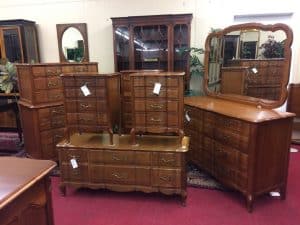 The fees for auction houses often work on a sliding scale. In other words, you can expect to pay anywhere from 10% to 60% of the achieved price depending on how much it sells for. Each auction house offers different incentives to their consignors. Obviously, they want to offer the best and most valuable items for sale each week, so often their commission rates can be competitive.
The fees for auction houses often work on a sliding scale. In other words, you can expect to pay anywhere from 10% to 60% of the achieved price depending on how much it sells for. Each auction house offers different incentives to their consignors. Obviously, they want to offer the best and most valuable items for sale each week, so often their commission rates can be competitive.
Choosing an Auction House
Before you start calling around and asking commision percentages, however, we recommend attending the auction sale a few times. Indeed, the percentage matters less if the auction is poorly attended or doesn’t seem to attract the type of buyer you need for your items.
Many auction houses now a days run sales online, or with a combination of online and live buyers.
These auction houses that embrace technology tend to market aggressively and have successful sales. However, do your due diligence and experience the auction yourself. Your own experience can tell you tons about an auction house.
Just as researching your piece is important if you are selling your furniture yourself, we recommend bringing any research and documentation with you to an auction house. Even your original receipt of sale can help the piece achieve a positive result.
Also, make sure your item is clean and ready to sell when you drop it off or when the auction house picks it up. Potential buyers will be opening drawers and touching your piece before the sale.
Also, when you decide to consign with an auction house, make sure you understand all policies and procedures. If something is broken or stolen, you want to be sure that your item is insured and accounted for.
Finally, double check about auction reserves. Some auction houses set a minimum price for each item and some do not.
Benefits of Selling at Auction
Largely, the benefit of selling at auction is the speed and convenience. If you want to liquidate fast, and with little work on your end, an auction house can sell your item, and usually pay you within a few short weeks.
Also in an auction atmosphere, the buyers set the price of your item. While a gamble, that means your item also has the chance of selling for more than you expected! It only takes two people in a room (or at home with their glass of wine in front of the computer) who want something to drive the price up beyond expectations!
As a seller, that can be exciting motivation for selling at auction. back to list
What You Need to Know When Selling at a Consignment Shop
Consignment shops offer a great business opportunity for liquidating your antique furniture. Consignment shops typically take a percentage of the sale. In return, they house, store, market, sell and usually deliver your item to the future buyer. Also, they take care of their merchant account and sales tax. 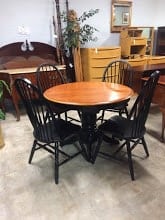
Consignment shops generally have built-in foot traffic. Indeed, with many consignors and shoppers peeking around every week, they can be surprisingly busy shops. Of course, many people who consign also buy merchandise there, so often it creates a revolving door of foot traffic.
Consignment Shop Pricing
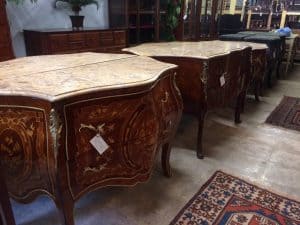 At some consignment shops, the owner will set the price of your item, and at others you will have more control over the price.
At some consignment shops, the owner will set the price of your item, and at others you will have more control over the price.
Commonly, consignment shops have a price structure that steps down in price. In other words, three date ranges will have three different price tags, with the highest price set at the beginning. So, shoppers can choose to wait for the price drop, or, pay the highest price and not wait. This can help your merchandise sell through successfully.
In some ways, this price structure sets up a feeling of urgency with the customers. It creates a dilemma in their minds. Wait? Or Pay? Instantly, they might have a Fear of Missing Out (FOMO) and decide to purchase at top dollar.
Consignment shops generally turn over a lot of merchandise, but it’s important to find the right type of shop for your items.
Generally, consignment shops stay in a certain niche. For instance, many consignment shops stick with general used furniture like sofas and sectionals, dinette sets and bedroom sets. Thus, family friendly furniture attracts family buyers. In other words, a specialty antique may stick out like a sore thumb and have difficulty finding a buyer among a sea of basement-quality sofas.
So make sure you do a bit of research and talk candidly to the shop owner about what types of consignors they are looking for. Of course, like any situation, they should outline the fees (including pickup and delivery fees) and price structure of the shop.
Make sure too, you understand all the procedures. Many consignment shops set a limit on the time they will try to sell your item.
If your item doesn’t sell through during that time, what happens to the item? Some shops take possession of the piece of furniture, or it may be incumbent on you to pick it up. Most will have written contracts detailing all of this information.
The good thing about consignment shops is that after you drop off your item, you can put your feet up a bit. Hopefully, by putting your antique furniture in competent hands, you can simply wait for a check or phone call.
The bad thing about consignment shops is that after you drop off your item, you are waiting on someone else to sell it. Of course, there are no guarantees in life and selling at a consignment shop presents a gamble like anything else. back to list
Secrets of Selling to an Antique Dealer or Antique Shop Near Me
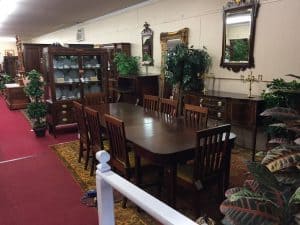 The last way to sell antique furniture is to solicit an antique dealer or antique store near me. As a former bricks and mortar antique store, we were propositioned many times a day about buying antique furniture. So, here are my tips about selling your furniture direct to an antique store.
The last way to sell antique furniture is to solicit an antique dealer or antique store near me. As a former bricks and mortar antique store, we were propositioned many times a day about buying antique furniture. So, here are my tips about selling your furniture direct to an antique store.
Respect the antique store owners time and space. The purpose of the store being open is to sell, not to buy. Often, the store owner spends tons of time and money buying on their “days off.” If you want to better your chances of selling to an antique shop owner, send an email. That way, the store owner can properly consider your proposition and give it the time it may deserve.
Send photos in the email. Just like you probably wouldn’t buy something without seeing it first, attach great photos to the email.
Include an asking price in the email. Don’t just assume the antique shop will want to make you a blind offer.
Finally, realize in selling to an antique store, you are trying to wholesale a piece of furniture or several pieces of furniture to a store. The store has costs in selling and marketing your piece and will not offer you retail or just under retail price.
Selling to Antique Dealers
With those caveats out of the way, often an antique dealer will give you a decent return on an antique piece of furniture. I can’t speak for all dealers, but in general, they probably want to be fair to you. Indeed, they most likely will offer you the auction price they would be willing to pay. Thus, you could save yourself the auction commission fees by selling direct to a dealer.
However, antique dealers may be uncomfortable buying from you at all. In some ways, it does present a conflict of interest and many dealers will prefer the anonymity of buying their goods at auctions and from larger wholesalers. Indeed, this allows the antique dealer to let the market set the price.
Also, many antique dealers find it more pleasant and convenient to shop outside of the area. Of course, this keeps much of their own business where it should be. Out of the sight and minds of their customers.
It also lets them shop guilt free. Believe it or not, antique dealers are sensitive people and they really do not want to insult people. If they do not care for your furniture or think it is valuable, they’d rather not have to tell you.
So, if an antique dealer says they do not purchase privately, do not take it personally. There may be a multitude of reasons why they have established this policy. back to list
Why not Just Donate Furniture to Charity
Lastly, another great option for liquidating your furniture is to donate your items to charity. Surprisingly, this could actually prove to be a profitable option for you. However, talk to your accountant. The tax write-off of your donation could help your bottom line for the year more than cash-in-hand.
Additionally, if you choose the right charity, your furniture donation gives back to needy families and communities. For me, sometimes this outweighs any personal financial benefit.
That said, all charities do not function in the same fashion, and I would suggest local, shelter-based or church-based thrift stores. Believe it or not, some large nationwide charities have questionable practices. In my opinion, they function more like private for-profit businesses than charities. So, to make sure your resources go for the greater good, try to do a little research before donating. back to list
Conclusion
There is a great market for Antique Furniture and Vintage Furniture in the United States. Many people love the style, history and quality of old furniture. While there is no free and easy solution to finding a buyer, selling furniture can be very satisfying and fun. Best of luck with your endeavors! Most of all, be happy your furniture finds a great new home and new life!
Do you have more tips to add? Something we missed? Questions or Comments? Leave your input below!
Thank you for reading, learning and growing with us as always! Please feel free to share this guide with your friends and family who need help selling their furniture.
Until Next time!
Rachel LaBoheme
Bohemian Furniture


Hello Linda, just read your comment and first thank you for reading our post. A few things stuck out to me in your comment. These reply’s are in no way in any particular order just my quick thoughts. An appraisal for antiques is just a quick opinion based upon a particular seller or appraiser, also there is a difference between an insurance appraisal for replacement versus selling an item. also may be based on listed similar sales online somewhere which can be misleading as those sellers may have experience or even current customers. And yes most likely someone took the time to sell items individually, usually leading to higher prices. Again a seller may have the ability to delivery an item as well as refinish any defects. Selling in bulk like a whole storage unit can be rough since it probably would sell in an auction atmosphere and you would have to give up anywhere from 50% to 20% commission. Im not sure where you are located but look at local auction houses. They will first ask for photos texted to them, Most wont take the time to “just” come out to take a look. The value in reselling antiques and vintage items today is in the ability to sell items one at a time and can be pricey for a businesses resources. Selling at auction look at the total realized price as some items you may think would do the best just do not do well and what you may not value highly goes for the most. Hope that helps.
Hello! I have read the whole article on Flipping Your Furniture and Antiques for Cash. I am still stumped though and hope maybe you can guide me. I have a large, environmentally controlled storage unit full of antiques, vintage, original art by a local artist, a few old prints/pictures, and a few good used furniture pieces and a custom made piece. There are some unusual antique items included. These are items that have been in the family for years or that I have personally acquired. All of them have graced my home for years and have had the pleasure of enjoying. There are too many items to sell individually. I would like to sell the whole storage unit in a bulk buy. Is that even possible? Do you have any tips for that approach? Or do you recommend another route? I have had most antique items valued by JustAnswer. Thank you so much for your consideration to my dilema and questions.
I appreciate the extensive guide on selling antiques. My in-laws recently bought an old house, and it came with a lot of antique furniture, decor, and other items. Thanks for explaining that your items are likely considered “vintage” unless they are at least 100 years old. I wish I knew how old the things my in-laws have are, but this information will be helpful. I’ll let them know to keep this in mind when they start taking this stuff to an antique dealer.